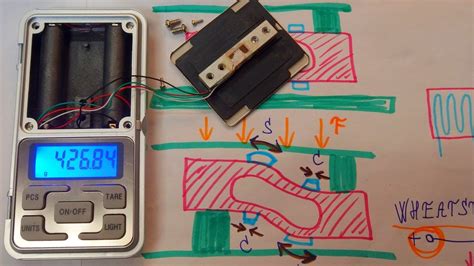How Do Food Scales Work
Ronan Farrow
Mar 20, 2025 · 2 min read

Table of Contents
How Do Food Scales Work? A Deep Dive into Kitchen Accuracy
Precise portion control is crucial for healthy eating, baking success, and even scientific experiments. This is where food scales come in, offering a reliable way to measure ingredients accurately. But how do these handy kitchen gadgets actually work? Let's explore the inner workings of food scales and understand the technology behind their precise measurements.
The Mechanics of Measurement: Strain Gauge Technology
Most modern food scales utilize strain gauge technology. This is the most common and reliable method for measuring weight. Here's a breakdown:
Understanding Strain Gauges
A strain gauge is a sensor that measures the deformation of a material under stress. Think of it as a tiny, incredibly sensitive measuring device. Within the food scale, a strain gauge is attached to a load cell. When you place an object on the scale, it applies pressure (stress) to the load cell. This pressure causes the load cell to deform ever so slightly.
From Deformation to Measurement
The strain gauge meticulously detects this minute deformation. This change in the load cell's shape alters the electrical resistance within the strain gauge. The food scale's internal circuitry precisely measures this change in resistance. Through complex calculations, this change is converted into a weight reading displayed on the screen.
Digital Signal Processing: The Brain of the Operation
The raw data from the strain gauge isn't directly translated into grams or ounces. The scale's microprocessor plays a crucial role, processing the signal to eliminate errors and provide an accurate measurement. This digital signal processing (DSP) accounts for factors like temperature fluctuations and calibration drift, ensuring consistent accuracy.
Different Types of Food Scales and Their Mechanisms
While strain gauge technology is dominant, some scales may use alternative methods, such as:
-
Electromagnetic Force Restoration: These scales use an electromagnetic field to counteract the weight of the object. The strength of the magnetic field needed to balance the weight is directly proportional to the object's mass.
-
Piezoelectric Effect: Certain scales employ piezoelectric crystals that generate a voltage when subjected to mechanical stress (the weight of the item). This voltage is then converted into a weight reading.
However, strain gauge-based scales remain the most prevalent due to their affordability, robustness, and accuracy.
Maintaining Accuracy: Calibration and Care
To ensure your food scale provides consistently accurate measurements, regular calibration is essential. Many scales come with built-in calibration features. Following the manufacturer's instructions for calibration and cleaning will prolong the life of your scale and maintain its accuracy.
Conclusion: Precision at Your Fingertips
Food scales, primarily using strain gauge technology, offer a precise and convenient way to measure ingredients. Understanding their inner workings allows you to appreciate the sophistication of these seemingly simple devices and ensures you get the most out of your culinary creations. Remember to regularly calibrate your scale for optimal performance.
Featured Posts
Also read the following articles
| Article Title | Date |
|---|---|
| How Can I Keep From Singing Pdf | Mar 20, 2025 |
| Beabadoobee Vinyl This Is How Tomorrow Moves | Mar 20, 2025 |
| How Do I Get Spiders Out Of My Car | Mar 20, 2025 |
| Teachers Pay Teachers How Much Can You Make | Mar 20, 2025 |
| How Do You Join The Episcopal Church | Mar 20, 2025 |
Latest Posts
Thank you for visiting our website which covers about How Do Food Scales Work . We hope the information provided has been useful to you. Feel free to contact us if you have any questions or need further assistance. See you next time and don't miss to bookmark.
